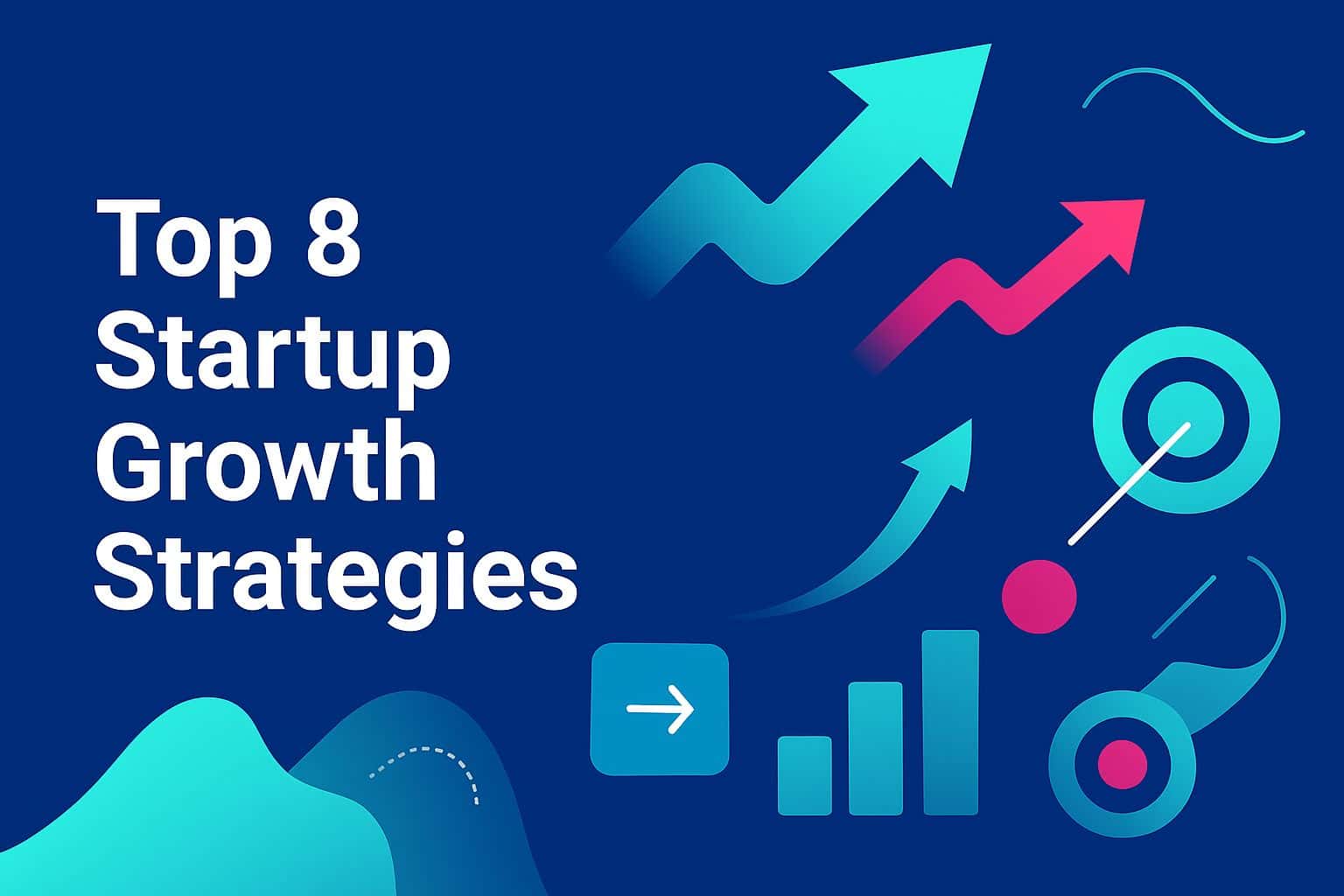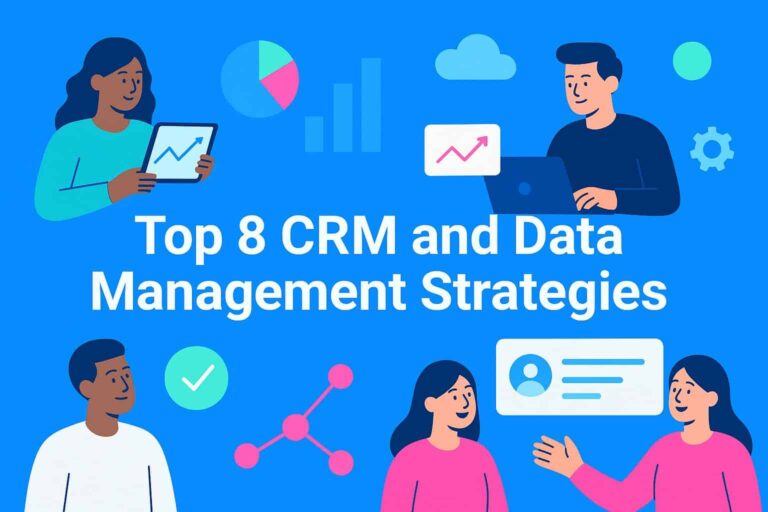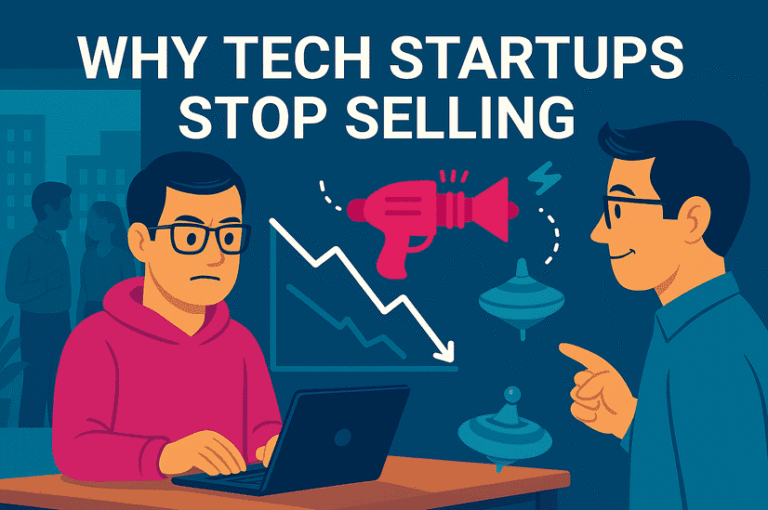A Startup’s Path to Growth…
Growth acceleration in B2B tech startups is a complex, multifaceted process that requires strategic planning, a complete focus on execution and seamless collaboration across all departments. To effectively accelerate growth, startups must prime their entire organisation, ensuring that all parts work together harmoniously. Let’s delve into the key areas that need to be aligned, the resources required and the steps necessary to transition from planning to execution for scaleups.

1. Vision and Strategic Planning
Before diving into growth acceleration, it’s crucial for the leadership team to have a clear and unified vision of where the company is heading and communicate it clearly to the team. Strategic planning involves setting specific, measurable goals that align with the company’s long-term vision. This plan must outline the target market, customer segments, revenue goals and key performance indicators (KPIs) that will measure success.
Key Actions
- Define Growth Objectives
Identify specific growth metrics, such as revenue targets, customer acquisition goals and market expansion plans.
- Market Research
Conduct thorough research to understand market needs, customer pain points and the competitive landscape.
- SWOT Analysis
Assess the company’s strengths, weaknesses, opportunities and threats to inform strategic decisions.
2. Marketing and Sales Alignment
For growth acceleration to be effective, Marketing and sales teams must be tightly aligned. Misalignment between these two functions will lead to wasted resources, missed opportunities and slower growth, if not stagnation. Marketing and sales teams must collaborate closely to ensure the go-to-market plan is fully prepared and understood, marketing messages resonate with potential customers and that sales teams are equipped with the right tools and insights to close deals.
Key Actions
- Develop a Unified Go-to-Market Plan
Create a cohesive strategy that includes clear messaging, target market details, Ideal Customer Profile (ICP), target persona criteria and a strong value proposition. All these factors must be brought together for targeted marketing campaigns to be effective.
- Implement Account-Based Marketing (ABM)
For solutions with a high-ticket price, focus on key target companies and tailor marketing efforts to demonstrate your solution meets their specific needs. Gather information on each target and communicate to the right person at the right time and with the right message.
- Sales Enablement
Provide sales teams with the resources they need to effectively engage with prospects, such as content, training and tools.
3. Product Development and Innovation
Product development is at the core of any tech startup’s growth strategy. The solution must not only meet market needs but also offer differentiated value to stand out in an overcrowded marketplace. Continuous innovation is key to staying ahead of competitors and keeping customers engaged.
Key Actions
- Customer Feedback Loops
Establish mechanisms for gathering and analysing customer feedback to inform product development.
- Agile Development
Use agile methodologies to iterate quickly, adapt to changes and deliver new features that meet customer demands.
- Technology Investment
Invest in cutting-edge technologies that can enhance product capabilities and provide a competitive edge.
4. Operations and Scalability
Operational efficiency is a key part of growth. As a startup grows, it must scale its operations to handle increased demand without sacrificing quality or customer satisfaction. This involves optimising processes, investing in automation and ensuring the company’s infrastructure can support growth.
Key Actions
- Process Optimisation
Streamline and automate workflows and eliminate bottlenecks to improve efficiency.
- Automation Tools
Invest in tools that automate simple and repetitive tasks, freeing up time for employees to focus on serving the customer.
- Scalable Infrastructure
Ensure that your technology stack, from servers to software, can handle increased traffic and data as the company grows.
5. Human Resources and Talent Management
People are the most valuable assets in any organisation, and this stands equally for a tech startup. To accelerate growth, startups need to attract, retain and develop top talent. This includes nurturing a strong company culture, offering competitive compensation and providing opportunities for professional growth.
Key Actions
- Recruitment Strategy
Develop a strategy to attract top talent through strong employer branding, including employee referrals, social media and partnerships with universities.
- Employee Development
Invest in training and development programs to help employees grow their skills and advance their careers.
- Company Culture
Promote a culture of innovation, collaboration and continuous improvement that aligns with the company’s growth objectives.
6. Financial Management and Funding
Financial resources are the lifeblood of growth, and it’s important to continually apply rigour to balance costs and revenues. Effective financial management ensures that the company has the necessary capital to invest in growth initiatives, from marketing campaigns to product development. For many startups, securing funding is often a critical step in accelerating growth.
Key Actions
- Budgets and Forecasts
Create detailed budgets and financial forecasts that align with growth objectives.
- Fundraising
Explore various funding options, such as angel investors, venture capital, private equity and so on.
- Cash Flow Management
Ensure that the business has enough liquidity to cover operational expenses and invest in growth initiatives.
7. Customer Success and Retention
Customer success helps ensure your customers derive value from the solution and is crucial for retention, upselling and generating referral business. Happy customers are more likely to become brand advocates and help drive organic growth.
Key Actions
- Customer Onboarding
Develop a comprehensive onboarding process that ensures customers see value as quickly as possible and within your stated timeline.
- Proactive Support
Offer proactive customer support to address issues before they become problems.
- Retention Strategies
Implement strategies to retain customers, such as regular check-ins and value-added services.
8. Execution and Performance Tracking
Execution is where plans turn into reality. To ensure that growth acceleration strategies are effective, you must track performance, measure results and adjust tactics as needed. This requires a robust system for monitoring KPIs and a culture of accountability and support.
Key Actions
- Set Clear KPIs
Define KPIs for each department and align them with overall growth objectives.
- Regular Performance Reviews
Conduct regular team and individual reviews to assess progress and identify areas for improvement.
- Decision Making
Use data to help inform choices and optimise strategies in real-time. However, it is equally important to have the benefit of talented people who can call on their experience to help make quick decisions when data is not available or is insufficient.
Your Startup Becomes What You Focus On
Growth acceleration is a multifaceted endeavour that requires careful planning, cross-departmental collaboration and a focus on execution. Staying focused on the plan is a key factor that many startups fail at, as growth cannot be achieved without it. By aligning marketing and sales, driving product innovation, optimising operations, managing finances and focusing on customer success, startups can create a solid foundation for rapid and sustainable growth. All parts of the organisation must be primed for growth by working together and towards common goals, with the necessary resources in place to execute the plan effectively.
You may want to read: “2025 State of B2B Pipeline Growth Report – Summary”







